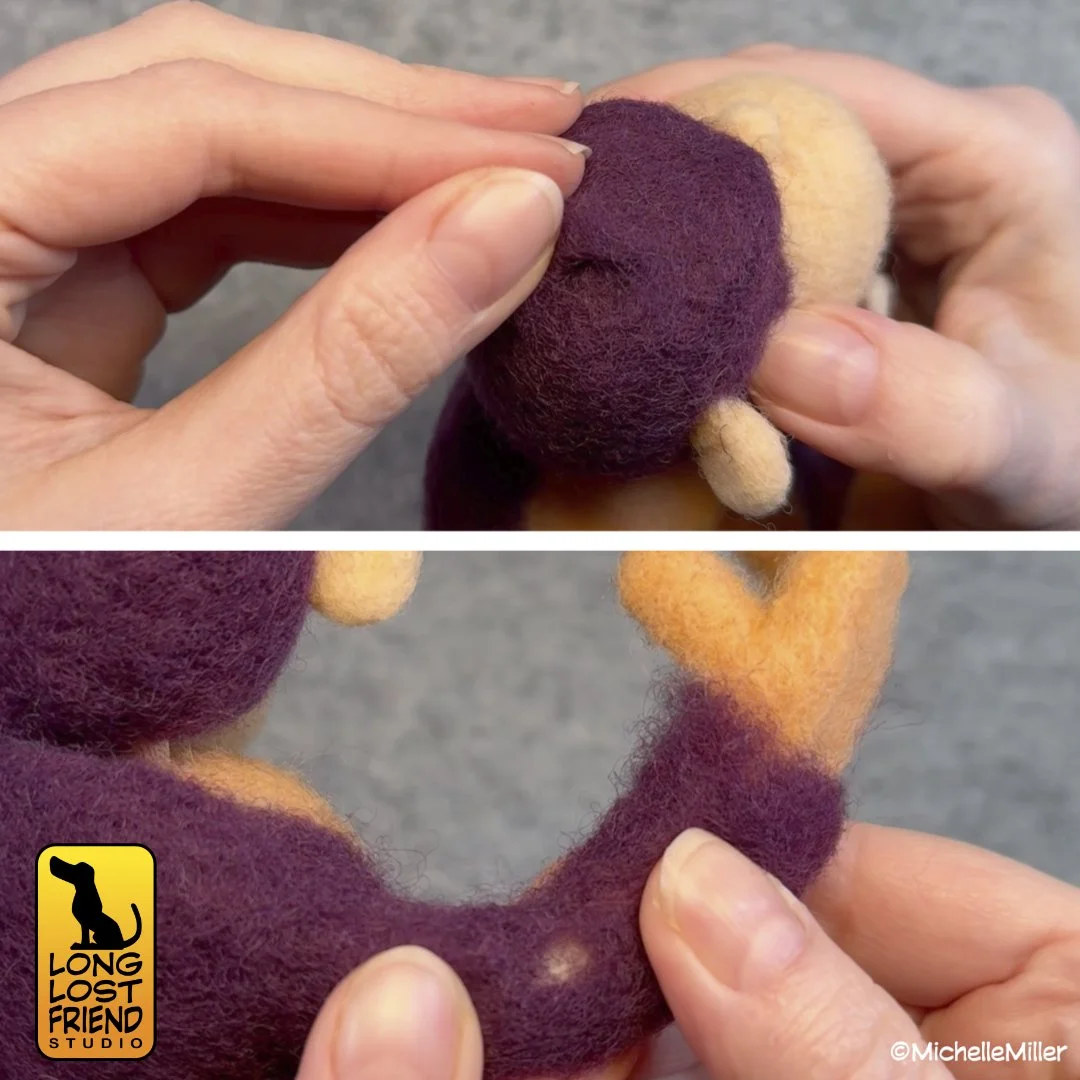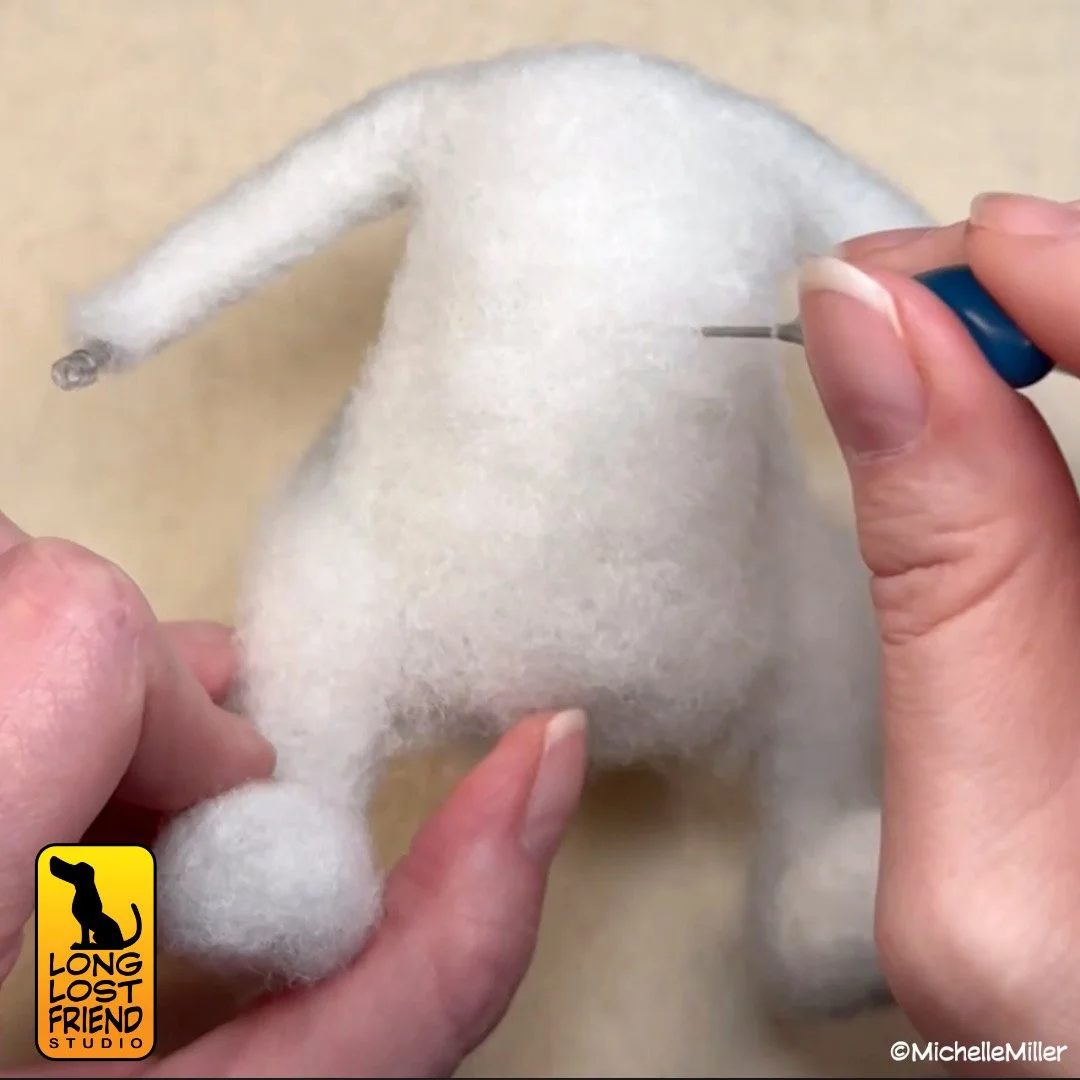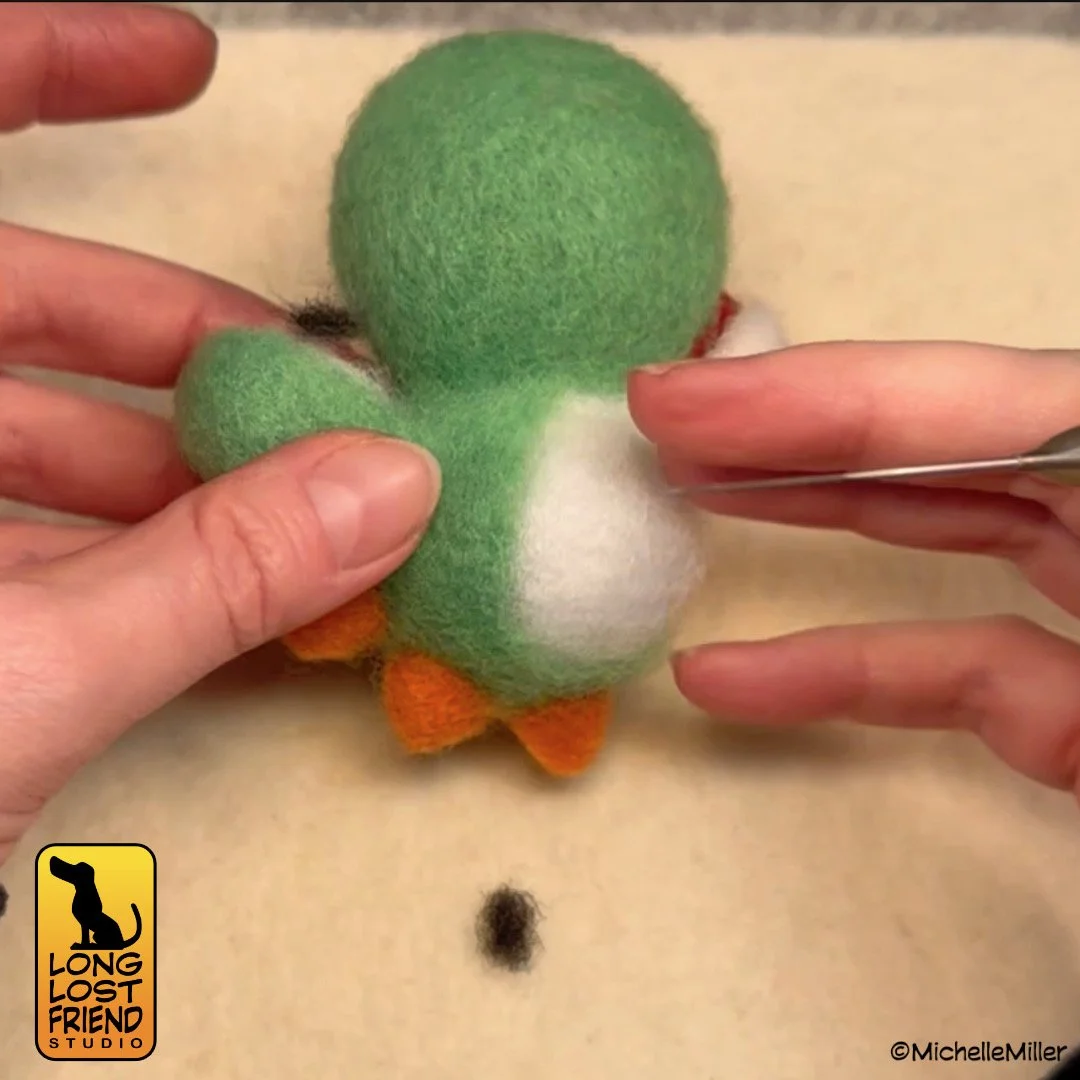Three Bags Full
Michelle’s needle felted figures have been part of our diorama builds for a while. Wool is a great material for depicting creatures who are furry, fuzzy, or felted like monsters or Muppets.
Kermit hard at work at the office and in the field
As much of a staple as wool is to fiber sculpting, it has a few drawbacks. Not the least of which is that wool is like succulent prime rib to moths. Most of the figures Michelle’s crafted have maintained their integrity. But all it takes is one open window on a hot summer night and suddenly King Kong looks like he’s been ventilated by four or five circling biplanes.
King of the Monsters? Or King of the Moth-Tears? We got puns!
So this week, we experimented with an alternative material for the first time to see if it held any promise. And when I say ‘we’ I mean Michelle did all the heavy lifting and I stood by for moral support. Nevertheless, right out of the gate, she identified at least one positive difference: Moths treat polyester the way nine-year-old me treated Brussels sprouts. No thank you, mom.
I can make art, or stuff a couch. Decisions, decisions.
Also, Polyester fiber fill is much easier to locate than wool. Michelle tries to purchase all of her wool from distributors who support the ethical sourcing of wool. But that often means a scarcity of materials or colors, and a reasonable-but-premium price point.
The fiber fill, on the other hand, is available at just about any craft store or fabric store you can stroll into, and the price is very consumer-friendly. Sheep are left blissfully excluded from the entire operation.
As usual, most figures begin life as a plucked chicken
Cost is another factor. Part of the needle felting process is bulking out your figure with core wool. And though core wool is often the least expensive wool you can find, it’s still more economical to beef up your figure with fiber fill as it rings up at a mere fraction of the cost of wool.
The Helix Nebula, located in the constellation Aquarius
And with wool, where color is concerned, your choice is limited to the hues the farms and distributors offer. But for just a few extra dollars and a measure of your valuable time, you can dye the fiber fill to the colors you need, in the quantities you need. This week was Michelle’s first attempt at working with and dyeing polyester fiber fill, and though it took some prep work, we ended up with a veritable Skittles-bag of colors.
Archaeologists uncovering the Yoshisaurus Rex
Of course, there’s almost always some sand in the swim trunks. With polyester fibers, you run across these weird little zig-zag fibers that occur in processing. And you can’t tear this synthetic stuff with your fingers like you can with wool. And as nice as it is to control your own colors, for every color we wanted to mix, we did spend at least an hour over a steaming pot in the workshop. And let’s not forget — though it may not be cost-prohibitive, synthetic dye isn’t free.
Finished Yoshi sculpt in his “Crafted World” environment mock-up
But when you run down the list of pros and cons we covered in this week’s video, the positives seem to outweigh the negatives. Especially when you’re budgeting against a challenging economy and the very real possibility that some supplies and services will become more scarce in the near future.
When the eggs hatch, they imprint on the first thing they see. In this case, it will be a white picket fence.
Nintendo’s Yoshi, bounding through his paper and cardboard “Crafted World” environment, was an apt subject for this crafty experiment. And for now, the experiment seems to have been a success. Michelle’s found an alternative material she can fall back on when wool isn’t an option. And given its various benefits, maybe it’ll become part of the standard workflow. And I’m fine with giving sheep a day off now and again even if it means a moth has to skip a meal.
If you want to see our process, you can view the video at the link below.







